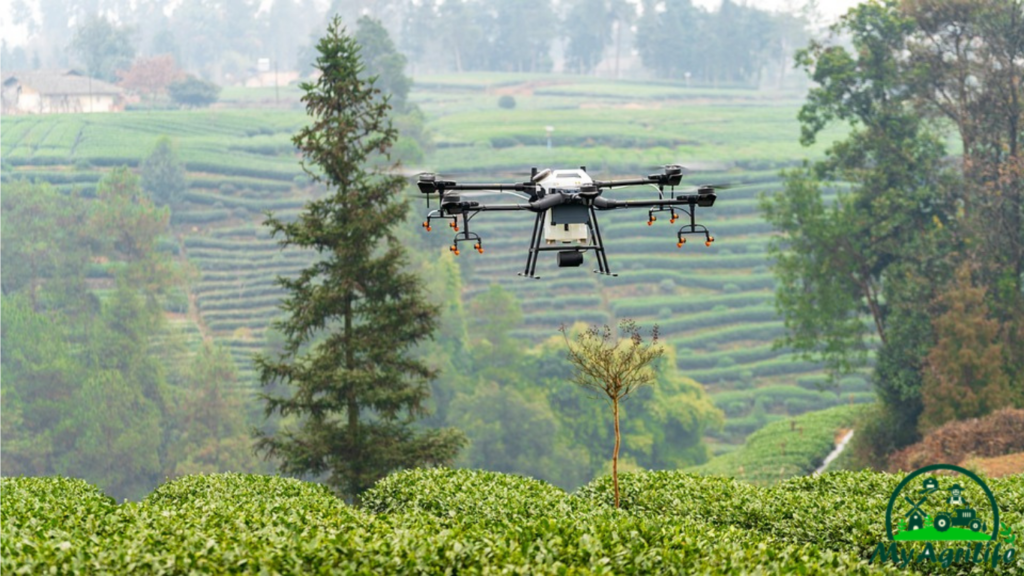
Drones are increasingly being used in farming to provide farmers with real-time data on their crops, livestock, and land. By leveraging drone technology, farmers can gain access to high-resolution aerial imagery, multispectral images, and other sensor data that can help them optimize their farming practices, reduce costs, and increase crop yield.
Some of the key applications of drones in farming include crop monitoring, precision agriculture, crop spraying, livestock monitoring, mapping and surveying, disaster assessment, harvesting, crop inspection, irrigation monitoring, planting, weather monitoring, and pest management. Each of these applications can provide farmers with valuable insights into their operations, allowing them to make data-driven decisions and improve their farming practices.
While there are challenges associated with the use of drones in farming, including regulations, technical limitations, data management, cost, and skill and knowledge, the benefits of using drones in agriculture are significant. By adopting drone technology, farmers can improve efficiency, reduce costs, increase crop yield, and contribute to a more sustainable and profitable agricultural sector.
Drones Farming Useing Cases
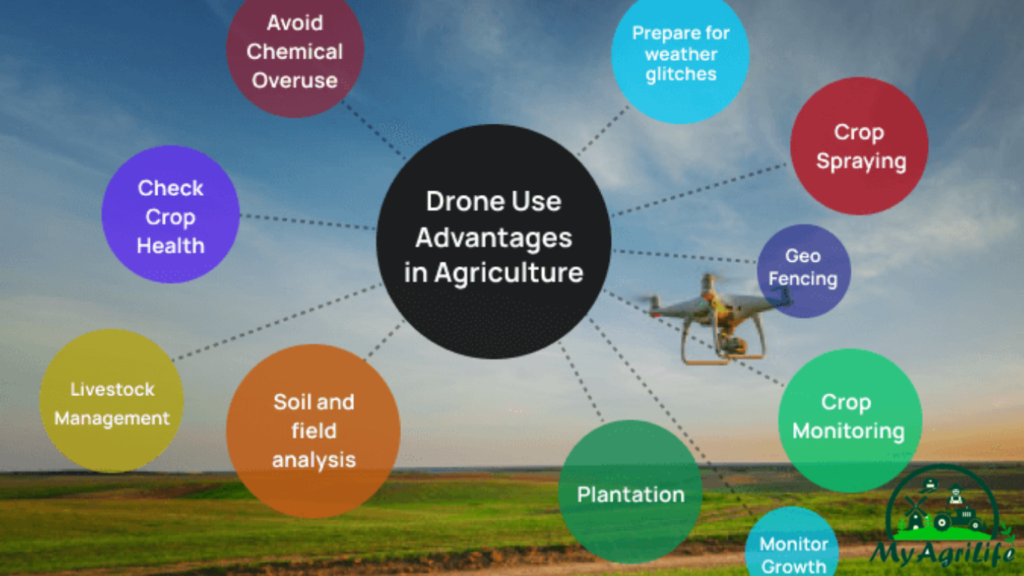
1.Crop health monitoring: Drones equipped with multispectral cameras can capture images of crops that reveal their health status, enabling farmers to identify and address issues such as nutrient deficiencies, pests, or disease early on. This can reduce the use of pesticides and other inputs, leading to cost savings and more sustainable farming practices.
2.Soil analysis: Drones equipped with sensors can collect data on soil characteristics, such as moisture content, temperature, and nutrient levels. This information can be used to create detailed soil maps and develop precision agriculture practices that optimize crop yields while minimizing waste.
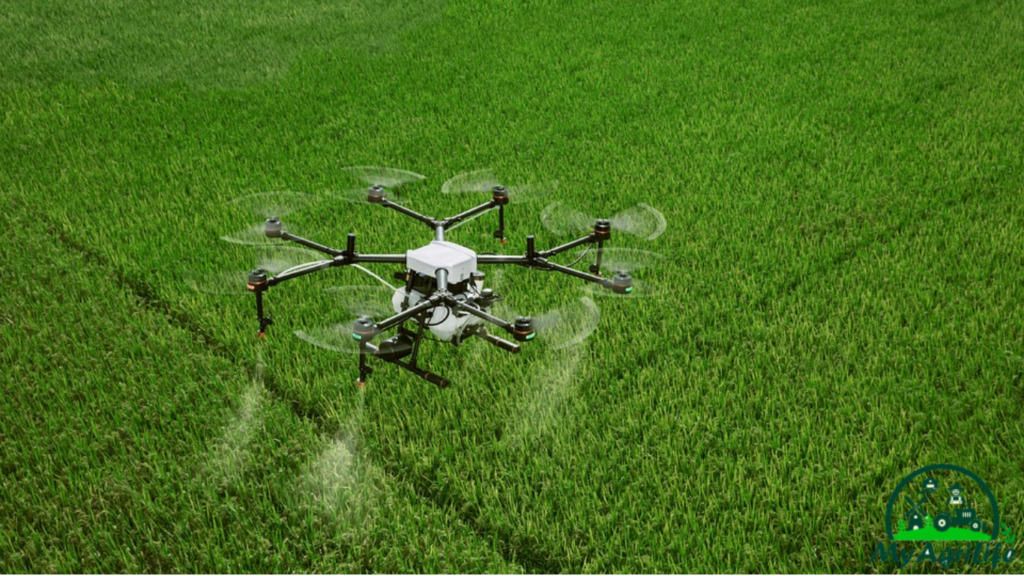
3.Crop spraying: Drones equipped with sprayers can apply pesticides and fertilizers more precisely and efficiently than traditional methods. This can reduce chemical exposure for farmers and farm workers, as well as reduce chemical runoff that can harm nearby ecosystems.
4.Mapping and surveying: Drones can be used to create detailed maps of farm fields and track changes over time, enabling farmers to make more informed decisions about irrigation, planting, and other practices.
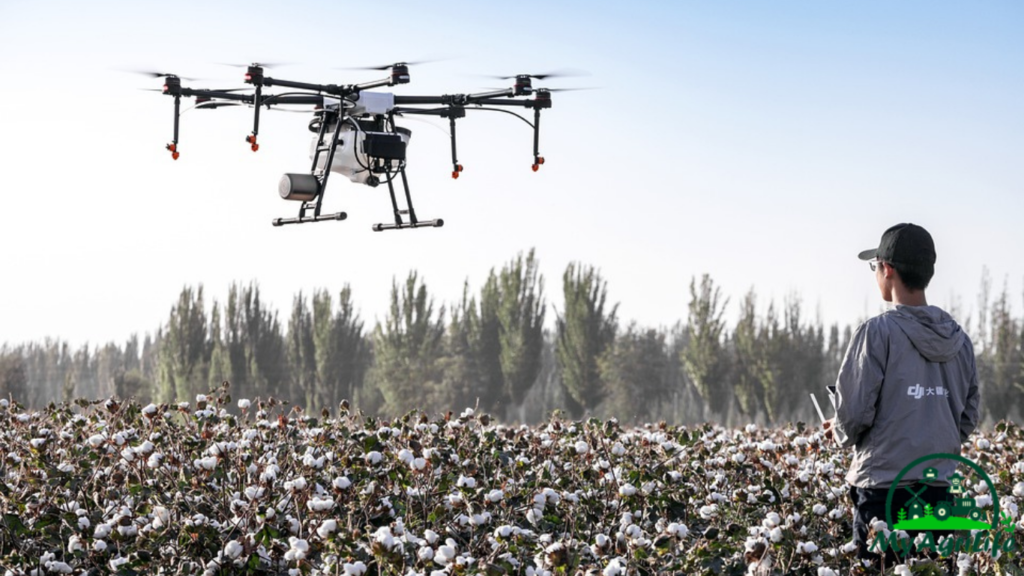
5.Livestock monitoring: Drones equipped with cameras can monitor livestock, count animals, and track their movements. This can reduce the need for manual labor and improve animal welfare.
6.Emergency response: Drones can be used to survey areas affected by natural disasters, such as floods or wildfires, providing real-time information to emergency responders and helping them to make informed decisions about where to allocate resources.
7.Harvesting assistance: Drones can be used to assist with harvesting operations by identifying mature crops or guiding machinery in low visibility conditions.
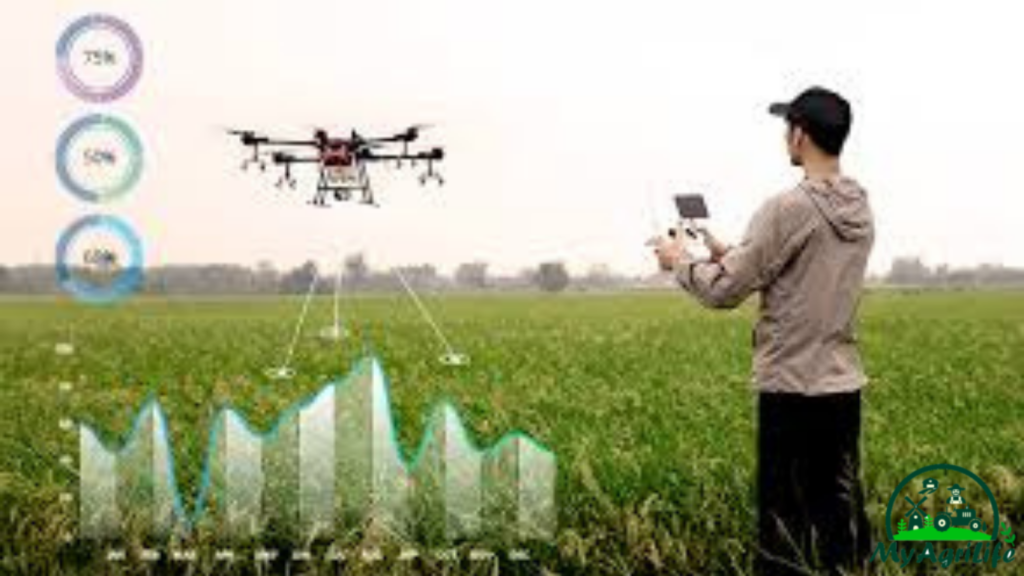
8.Farm infrastructure inspection: Drones can be used to inspect farm buildings, structures, and equipment, identifying areas in need of maintenance or repair.
9.Irrigation management: Drones can be used to monitor soil moisture levels, which can be used to optimize irrigation and water usage. This can help reduce water waste and increase crop yields.
10.Environmental monitoring: Drones are being used to monitor environmental factors that can affect crop health and yield, such as soil erosion, water quality, and air pollution. This information can be used to identify environmental risks and develop strategies to mitigate them.
11.Precision agriculture: Drones are being used to create detailed maps of farm fields, which can be used to identify areas with varying levels of fertility. This information can be used to optimize crop yields and reduce the use of fertilizers and other inputs. In some cases, drones are even being used to plant crops with precision accuracy.
Overall, drones are being used in a variety of ways in farming, from crop monitoring and precision agriculture to livestock monitoring and irrigation management. They have the potential to revolutionize the way that farming is done, making it more efficient, sustainable, and profitable.
Drones Farming Advantage
Drones offer several advantages for farming operations, including:
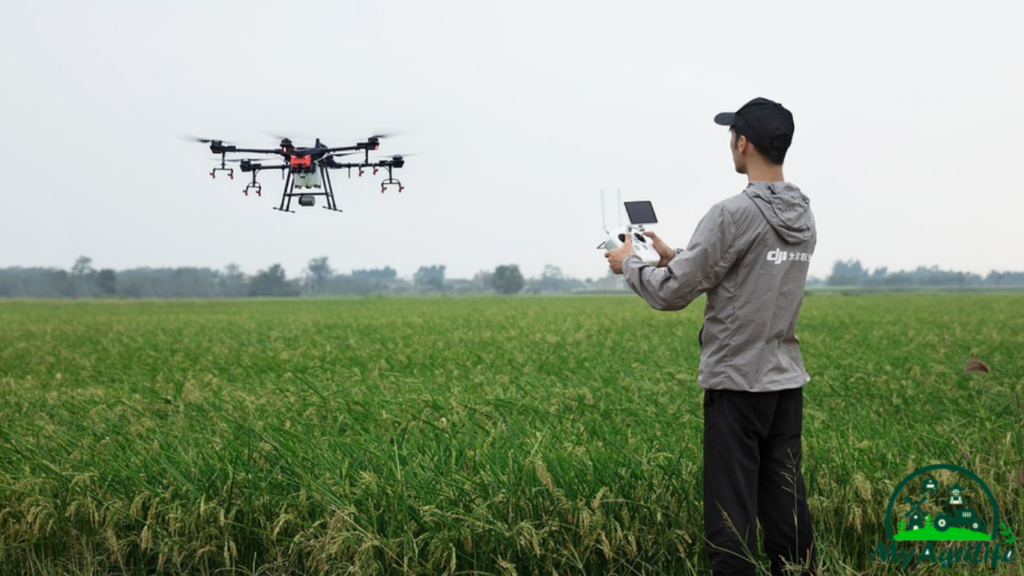
1.Improved efficiency: Drones can cover large areas of land quickly and efficiently, allowing farmers to monitor crops and livestock more effectively than traditional methods.
2.Real-time data: Drones can provide farmers with real-time data on crop health, soil conditions, and weather patterns, allowing them to make informed decisions about irrigation, fertilization, and pest management.
3.Increased crop yield: By monitoring crops more closely and making data-driven decisions, farmers can optimize their farming practices and increase crop yield.
4.Cost savings: Drones can help farmers reduce costs by providing more precise information on crop health, reducing the need for manual labor, and allowing for more targeted use of pesticides and fertilizers.
5.Sustainability: By improving efficiency and reducing the use of pesticides and fertilizers, drones can help farmers operate more sustainably, reducing their environmental impact.
Overall, the advantages of using drones in farming are significant, offering farmers new tools to improve their operations, increase productivity, and operate more sustainably. As drone technology continues to advance, it is likely that the benefits of using drones in farming will only continue to grow.
Drones Farming Challenges
While there are many potential benefits of using drones in farming, there are also some challenges that must be addressed in order to realize their full potential. Here are some of the main challenges facing the use of drones in farming:
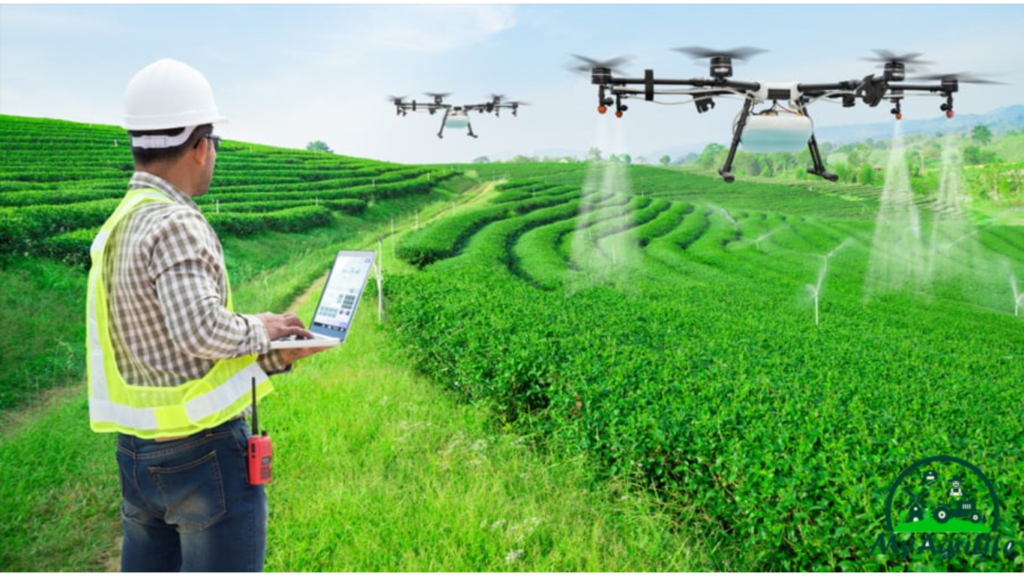
1.Regulations: In many countries, the use of drones in agriculture is subject to strict regulations, including restrictions on flight altitude, flight times, and the use of cameras and other sensors. Farmers must navigate these regulations in order to use drones legally and effectively.
2.Technical limitations: While drone technology has advanced rapidly in recent years, there are still technical limitations to consider, including limited flight time and range, limited payload capacity, and limitations in data processing capabilities.
3.Data management: Drones can generate large amounts of data, which can be challenging to manage and analyze. Farmers must invest in the right data management tools and processes to ensure they can effectively analyze and act on the data generated by their drones.
4.Cost: While the cost of drone technology has decreased significantly in recent years, drones can still be expensive to purchase and maintain. Farmers must weigh the potential benefits of using drones against the cost of investment.
5.Skill and knowledge: To use drones effectively in farming, farmers must have the skills and knowledge to operate and maintain the technology, as well as to analyze and act on the data generated by the drones.
Overall, while there are challenges facing the use of drones in farming, many of these challenges can be overcome with careful planning, investment, and training. As drone technology continues to advance, it is likely that the benefits of using drones in agriculture will continue to grow, making drones an increasingly valuable tool for modern farming operations.
conclusion
Drones have emerged as a promising technology for farming operations, providing farmers with new tools to monitor crops, manage pests, optimize irrigation, and more. By leveraging drones, farmers can gain access to real-time data, improve efficiency, reduce costs, and increase crop yield. However, there are also challenges to consider, including regulations, technical limitations, data management, cost, and skill and knowledge.
Overall, the use of drones in farming represents an exciting development in modern agriculture. As drone technology continues to advance and become more affordable, it is likely that more farmers will adopt drones as a key tool in their farming operations. By doing so, they can improve their farming practices, increase productivity, and contribute to a more sustainable and profitable agricultural sector.









